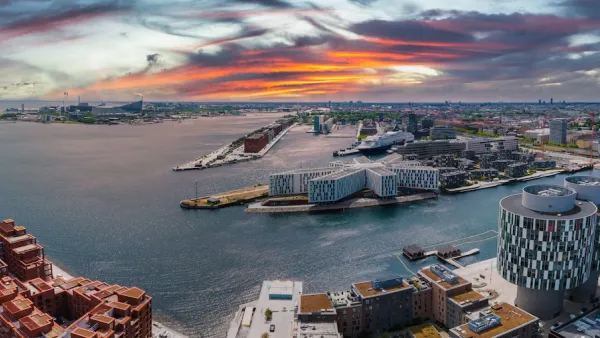The 1910 law, responsible for preserving views of the capitol from most roof decks, is being challenged by a small group of architects and developers who believe a modest change would inject vitality, sustainability and revenue into the urban fabric.
Preservationists view any alteration to the height limit will only open the door to more development. "I don't think you get it - it's a very special place," said Ann Hargrove, a resident and ardent defender of the limit. "Our capital was designed in such a special way to be different. One great feature is its height." She admitted that new buildings do get boxy, but said profit-minded developers, if left unchecked, would destroy the graceful parts of Washington's skyline.
Shalom Baranes, a Washington-based architect who wrote two articles this year promoting changes, argued that a modest relaxation in areas outside downtown would allow for a more modern city with greener construction, what developers sometimes refer to as "smart growth."
Dorn C. McGrath Jr., professor emeritus of city and regional planning at George Washington University, and a supporter of the limit, recolonized the need to evolve, but said that just because developers called growth smart did not mean it was.
FULL STORY: In The Capital, Rethinking Old Limits On Buildings

National Parks Layoffs Will Cause Communities to Lose Billions
Thousands of essential park workers were laid off this week, just before the busy spring break season.

Retro-silient?: America’s First “Eco-burb,” The Woodlands Turns 50
A master-planned community north of Houston offers lessons on green infrastructure and resilient design, but falls short of its founder’s lofty affordability and walkability goals.

Delivering for America Plan Will Downgrade Mail Service in at Least 49.5 Percent of Zip Codes
Republican and Democrat lawmakers criticize the plan for its disproportionate negative impact on rural communities.

Test News Post 1
This is a summary

Test News Headline 46
Test for the image on the front page.

Balancing Bombs and Butterflies: How the National Guard Protects a Rare Species
The National Guard at Fort Indiantown Gap uses GIS technology and land management strategies to balance military training with conservation efforts, ensuring the survival of the rare eastern regal fritillary butterfly.
Urban Design for Planners 1: Software Tools
This six-course series explores essential urban design concepts using open source software and equips planners with the tools they need to participate fully in the urban design process.
Planning for Universal Design
Learn the tools for implementing Universal Design in planning regulations.
EMC Planning Group, Inc.
Planetizen
Planetizen
Mpact (formerly Rail~Volution)
Great Falls Development Authority, Inc.
HUDs Office of Policy Development and Research
NYU Wagner Graduate School of Public Service





























